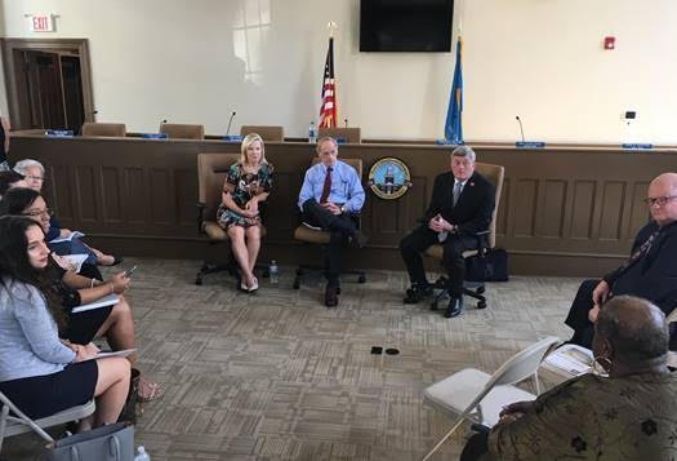Carper, Hall-Long call for ‘accurate count’ in Georgetown for 2020 Census

Delaware’s Senior U.S. Senator Tom Carper and Lt. Governor Bethany Hall-Long joined U.S. Census Bureau Director Dr. Steven Dillingham in Georgetown to remind Delawareans about the upcoming 2020 Census and highlight the importance of ensuring an accurate count.
The decennial Census is a critical count of the United States’ population and one of the few governmental activities required by the Constitution. The population data collected by the Census determines the seats in Congress and how hundreds of billions of dollars in government funds are allocated across federal agencies and programs.
Senator Carper, Lt. Governor Hall-Long and Director Dr. Dillingham met with representatives from organizations that work with hard-to-reach populations to discuss best practices as Delaware prepares for the upcoming Census.
Participants included the First State Community Action Agency, Delaware’s colleges and universities, La Esperanza, CHEER, the Dover Interfaith Mission for Housing, the Department of Education, Delaware Libraries, and the Delaware Tribal Council.
“Getting an accurate census count is critical to our country’s economy and our democracy,” said Senator Carper. “In Delaware, for each person uncounted, our state could lose more than $2,000 in federal funding each year. In order for our government and the businesses that drive our economy to work for Delawareans and Americans across the country, it’s imperative that they have the most accurate and comprehensive data on those they serve. Ahead of the 2020 Census, we must also work to ensure that our communities understand that their personal information will be protected and will not be shared with any other federal agency or organization.”
An accurate census count is critically important to Delaware in multiple ways, including determining how many representatives each state gets in Congress and how Congressional and state legislative districts are drawn.
The census count also determines how federal agencies distribute more than $675 billion in funds each year, how communities plan for a variety of needs including new roads, schools, libraries and emergency services, and how businesses use census data to make investment decisions.


